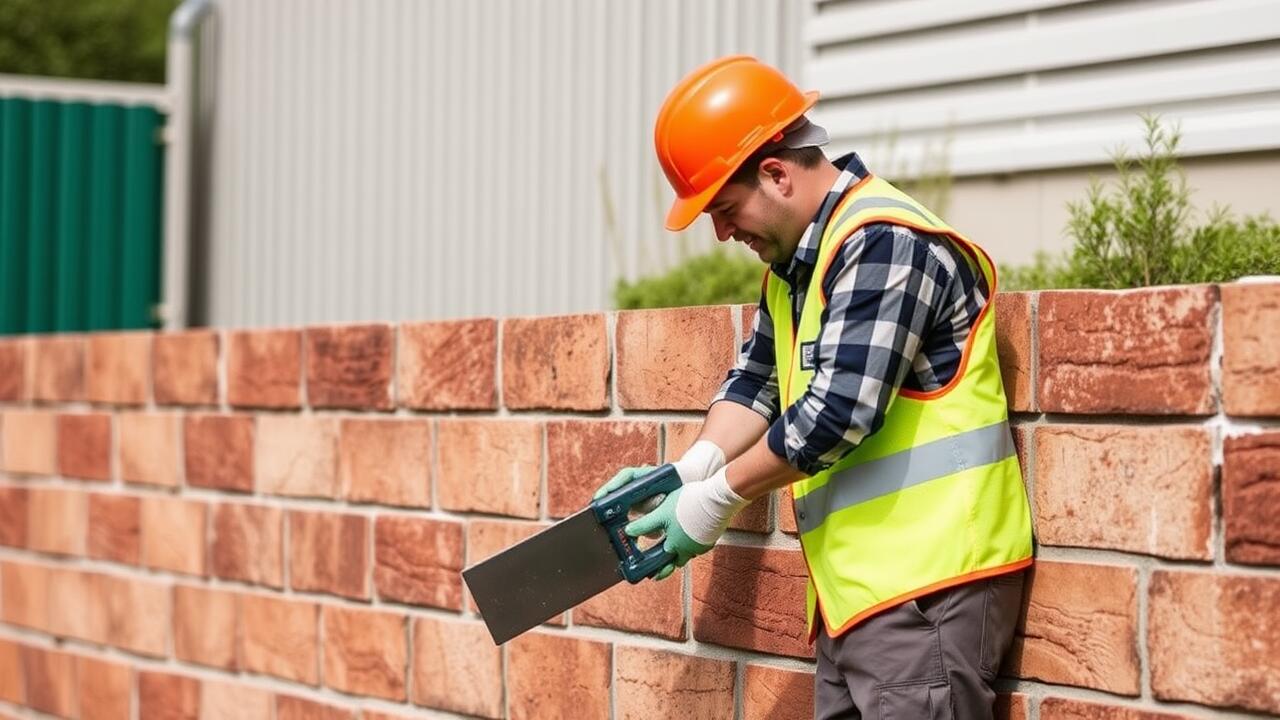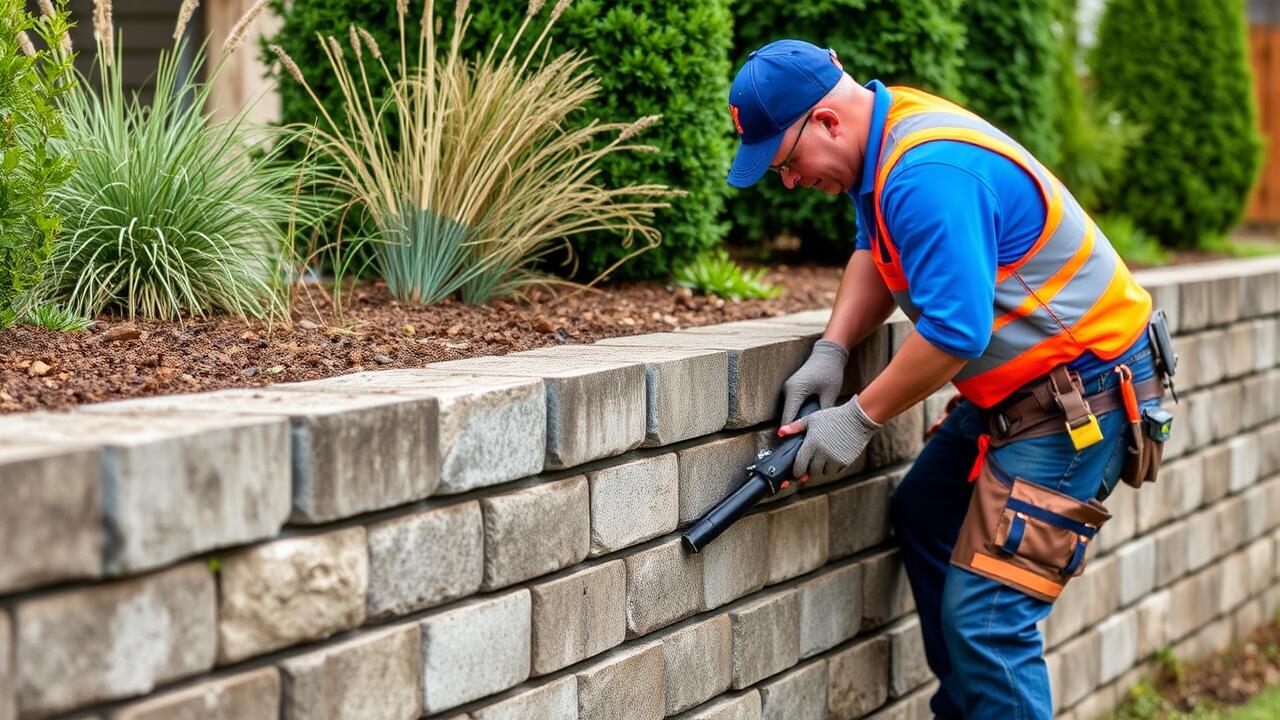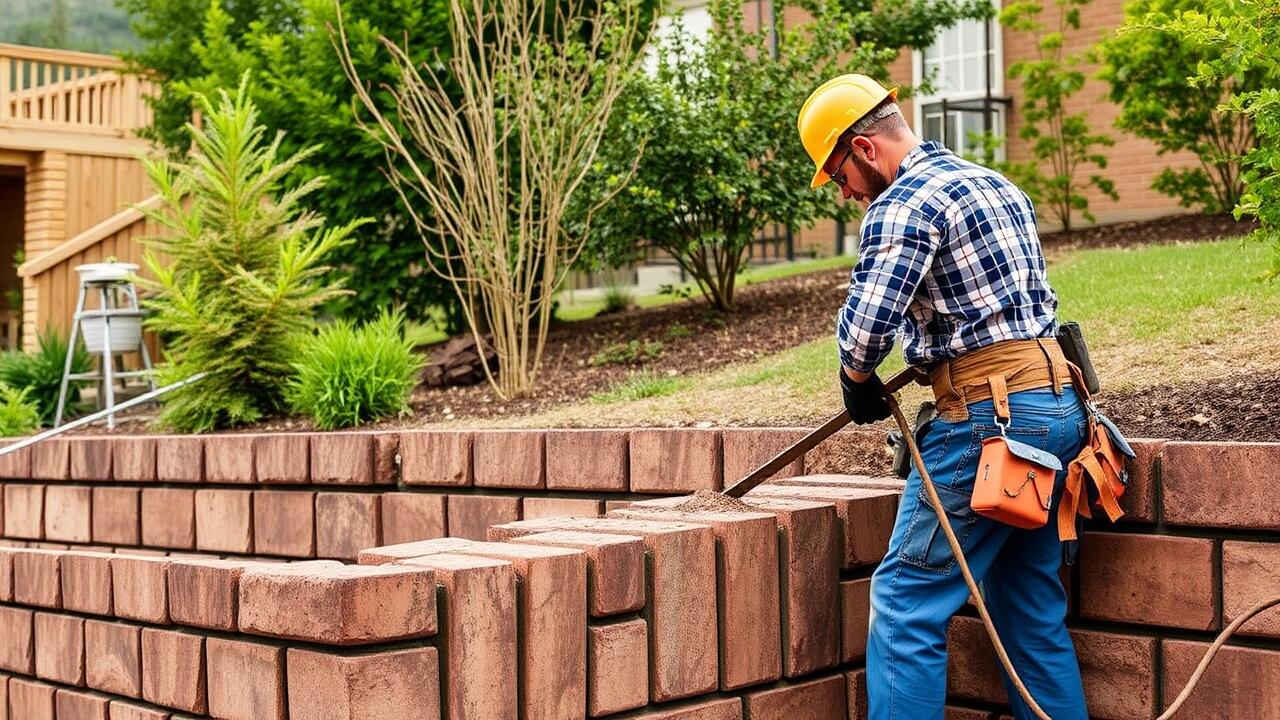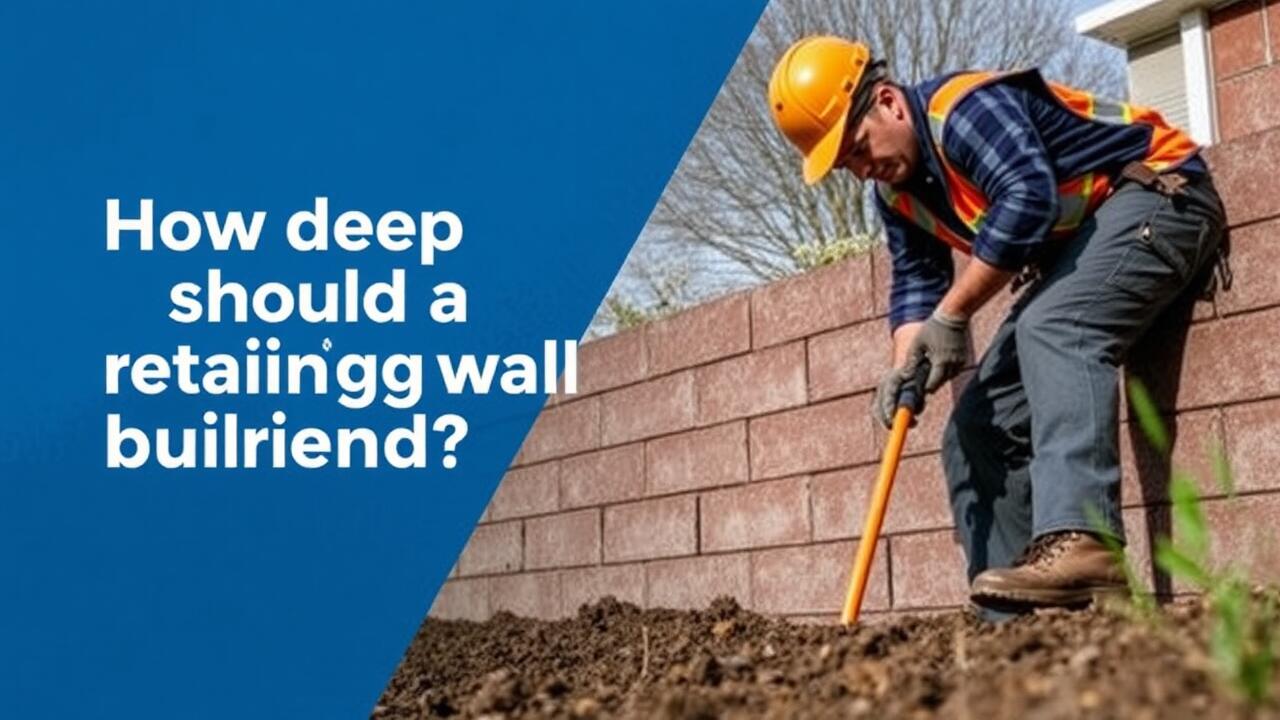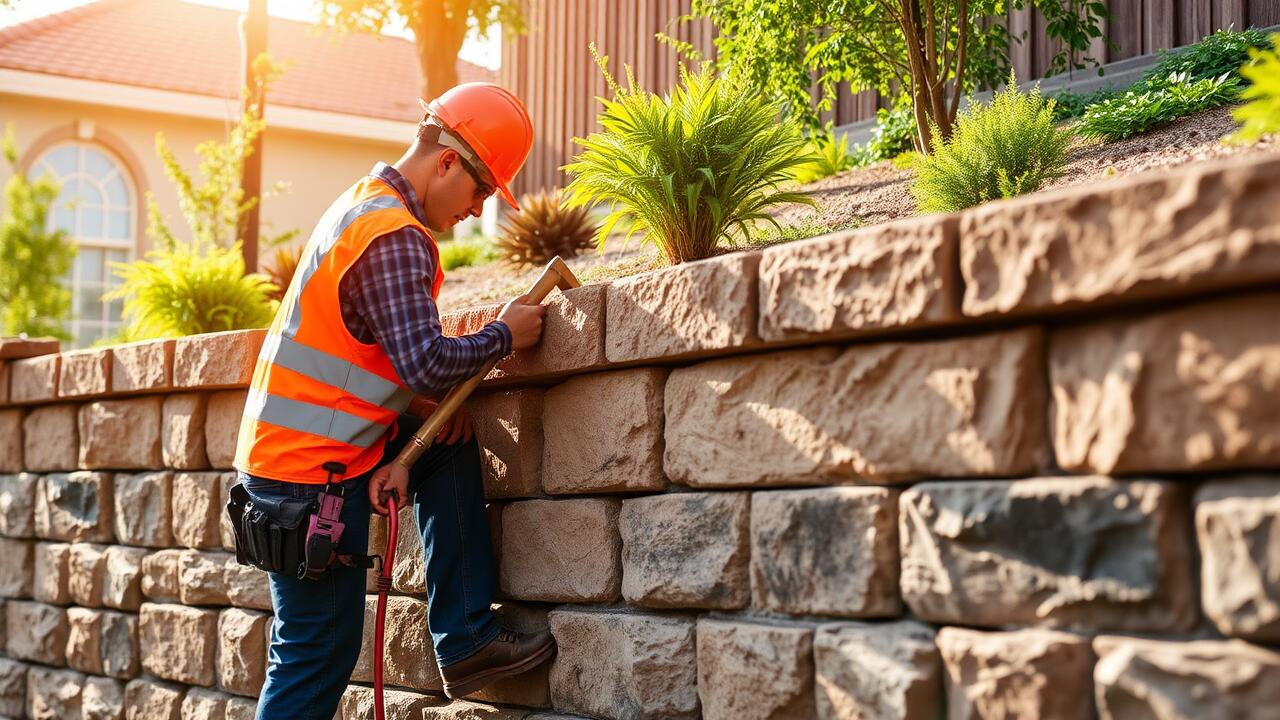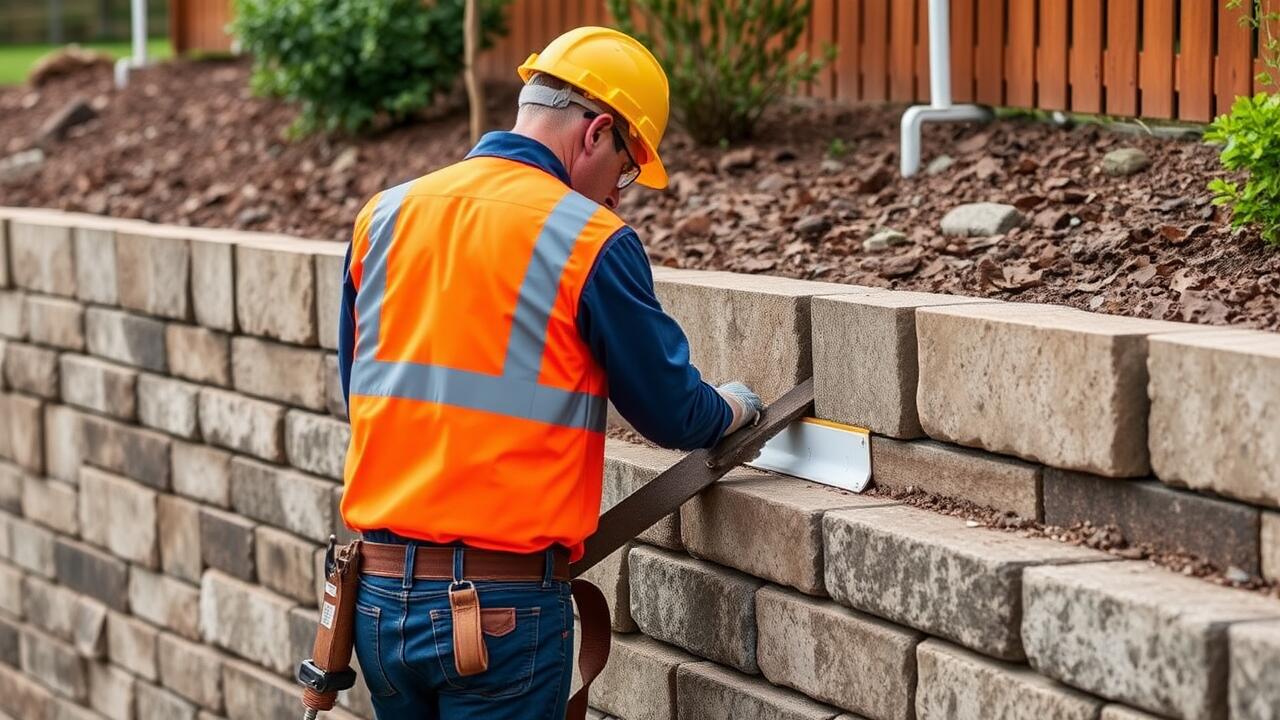
Drainage and Water Management Systems
Effective drainage and water management systems are crucial factors in the construction and sustainability of retaining walls. Water buildup behind the wall can create excessive pressure, leading to potential failure. Proper drainage prevents the accumulation of hydrostatic pressure, which can compromise the structure over time. Incorporating features such as weep holes, drains, and gravel backfill can significantly enhance water flow and reduce moisture-related issues.
When searching for “Retaining Wall Installation near me,” it's essential to consider contractors who prioritize drainage solutions in their design. Professionals should assess the specific site conditions, including soil type and local climate, to implement appropriate drainage strategies. This focus not only helps in the immediate performance of the wall but also extends its lifespan and reduces long-term maintenance costs.
Importance of Proper Drainage Design
Proper drainage design is critical when it comes to retaining walls. Water accumulation can lead to increased pressure behind the wall, resulting in structural failure over time. Engineers must account for water movement and implement effective drainage solutions to mitigate risks. This planning often involves installing weep holes, drainage pipes, or gravel backfill to ensure water flows away from the wall. Without these systems in place, retaining walls are at a higher risk of damage, increasing the overall cost of maintenance and repair.
When considering retaining wall construction or repairs, it is common for homeowners to search for "Retaining Wall Installation near me." This not only reflects the desire for professional guidance but also highlights the importance of experienced contractors who can handle drainage issues effectively. The right contractor will understand local soil conditions and hydrology, allowing them to design a draining system that will prolong the lifespan of the wall. Investing in proper drainage design during initial installation can save homeowners from significant expenses in the long run.
Retaining Wall Lifespan and Maintenance
The longevity of a retaining wall significantly influences its overall cost. A well-constructed retaining wall can last for several decades, depending on the materials used and the environmental conditions it faces. Regular maintenance, such as inspecting for cracks or erosion and addressing drainage issues promptly, can extend its lifespan. Investing in high-quality materials at the outset may result in reduced repair costs over time. Homeowners often consider "Retaining Wall Installation near me" as a way to find experienced contractors who can deliver durable results.
Neglecting maintenance can lead to severe complications, including structural failure and land erosion. Long-term costs can escalate due to the need for significant repairs or even replacement if the wall deteriorates early. Factors like soil composition, temperature fluctuations, and moisture levels can impact the integrity of the wall. Therefore, understanding the maintenance requirements of different retaining wall types is crucial for homeowners when assessing their investment.
Long-Term Costs vs. Initial Investment
When considering the expenses associated with retaining walls, it's essential to look beyond the initial investment. Although the upfront costs can be significant, factors such as maintenance and potential failures due to inadequate drainage can lead to long-term expenses that outweigh the initial savings. Investing in higher-quality materials and professional installation can mitigate these risks. Homeowners often underestimate the long-term impacts of poor drainage, which can contribute to erosion and structural damage over time.
Choosing the right type of retaining wall also plays a crucial role in managing long-term costs. Gravity walls, cantilevered walls, and segmental walls have different price points and lifespan expectations. While opting for the cheapest option may save money initially, it could result in higher costs if the wall fails and requires replacement or extensive repairs. Seeking professional guidance and researching “Retaining Wall Installation near me” can help in making informed decisions that prioritize durability and efficiency for the future.
Different Types of Retaining Walls
When considering retaining walls, it’s important to understand the different types available. Gravity walls rely on their weight for stability, making them suitable for smaller applications. Cantilevered walls, on the other hand, are designed with a base that allows them to efficiently resist lateral pressure with less material. Segmental retaining walls consist of interlocking concrete blocks, providing flexibility and ease of installation. Each type has its own advantages and is suited to specific site conditions.
Choosing the right type of retaining wall can have significant implications for cost and effectiveness. The choice will affect drainage requirements and maintenance levels over time. For those searching for reliable solutions, searching for "Retaining Wall Installation near me" can yield options that suit local regulations and soil conditions. Awareness of these factors helps ensure a successful project that meets long-term needs.
Comparing Gravity, Cantilevered, and Segmental Walls
Gravity walls rely on their own weight to resist the pressure from the soil behind them. Built from heavy materials like concrete or stone, these walls do not require additional reinforcement. Their robust construction makes them suitable for various applications, but the mass needed for effective support can increase material costs and the complexity of installation.
Cantilevered walls use a more efficient design, incorporating a stem and a base slab that extends into the soil. This allows them to achieve stability with less material than a gravity wall. Segmental walls, often made from interlocking concrete blocks, provide a flexible option that requires less excavation and is easier to install. Each type has its own advantages, which can affect both the initial cost and long-term performance. Homeowners may often search for “Retaining Wall Installation near me” to explore the best options for their specific needs.
FAQS
Why are retaining walls considered expensive?
Retaining walls can be costly due to factors such as material selection, labor costs, design complexity, and the need for proper drainage systems to prevent soil erosion and water accumulation.
How does drainage affect the cost of retaining walls?
Proper drainage is crucial for retaining walls to function effectively, which requires additional materials and design considerations, increasing the overall cost of the project.
What is the lifespan of a retaining wall?
The lifespan of a retaining wall can vary depending on its type and materials used, but with proper maintenance, it can last anywhere from 30 to 100 years.
Are there long-term costs to consider when building a retaining wall?
Yes, while the initial investment may be high, long-term costs such as maintenance, repair, and potential drainage issues should be factored into the overall expense.
What are the different types of retaining walls?
The main types of retaining walls include gravity walls, cantilevered walls, segmental walls, and anchored walls, each with its own cost implications and suitability for specific projects.
